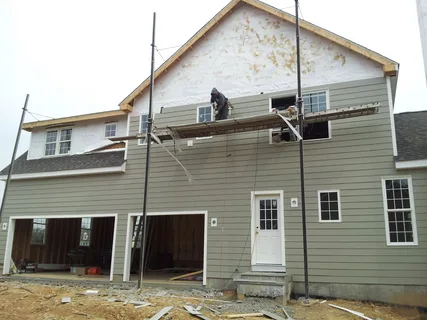
Your home’s siding is more than just a finishing touch. It shields your home from harsh weather, regulates indoor temperatures, and helps maintain your curb appeal. But over time, siding wears out. Cracks, warping, or rot are more than cosmetic—they’re signs you may need professional siding repair.
Ignoring these small problems can lead to major damage. Water can seep through gaps, causing mold, insulation issues, and even structural weakening. Whether you’re planning roof installations or dealing with an existing roof, timely repair is your best defense.
Common Signs You Need Siding Repair
Not all siding damage is obvious. Here are some red flags to look for:
-
Cracked, chipped, or warped panels
-
Peeling paint or faded color
-
Loose or rattling siding during wind
-
Fungus, mold, or mildew growing on the siding
-
Water stains or moisture inside the home
-
High energy bills from poor insulation
If you notice any of these, don’t wait. Quick action can prevent a full replacement—and save you thousands.
What Causes Siding Damage?
Several factors can weaken your siding over time:
-
Weather exposure – Wind, rain, hail, and snow take a toll
-
Improper installation – Causes gaps and weak points
-
Pest infestation – Insects and rodents can chew through wood or vinyl
-
Aging – Materials wear down and lose strength over decades
-
Moisture – Water getting behind the siding can lead to mold or rot
In regions like Queens, NY, where winter storms and humid summers are common, siding damage can appear faster than expected.
Why Siding Repair Beats Total Replacement (Sometimes)
Not every issue requires a full replacement. In many cases, professionals can target the damaged areas, remove and replace individual panels, and restore your home’s protection and appearance.
Siding repair is:
-
Faster than full replacement
-
More affordable for minor to moderate issues
-
Less disruptive to your daily life
-
Effective at preventing further damage
That said, if your siding is over 20 years old or showing widespread wear, a full replacement might be the smarter move. A qualified siding contractor can help you decide.
What Happens During Siding Repair?
Here’s a quick look at the process:
-
Inspection
A professional assesses the damage to determine the best repair approach. -
Material Match
Matching the new siding to the old ensures a seamless finish. -
Panel Removal and Replacement
Damaged sections are removed and replaced with new siding. -
Sealing and Finishing
Edges and joints are sealed to prevent future leaks or drafts. -
Cleanup and Inspection
The area is cleaned up and checked for proper installation and finish.
Quality siding repair should restore not just the look—but also the performance—of your exterior walls.
Why You Should Avoid DIY Siding Repairs
YouTube might make it look easy, but siding repair requires experience. Improper fixes can cause more harm than good—leading to water intrusion, visible mismatches, or weak spots that invite pests and mold.
Hiring a professional ensures:
-
Correct material selection
-
Seamless repair and color match
-
Proper sealing to prevent future damage
-
Work that complies with local codes
Conclusion
Don’t let damaged siding go unchecked. Whether it’s one panel or a whole section, professional siding repair can protect your home, reduce energy costs, and extend the life of your exterior. In places like Queens, NY, where the elements can be brutal, quick and reliable repairs make all the difference.
FAQs
1. How long does siding repair take?
Most repairs take 1–2 days depending on the size of the damage.
2. Can I repair just one piece of siding?
Yes. A professional can replace individual panels and blend them with the rest of your siding.
3. Will the repaired section match my current siding?
Experienced contractors can match the style and color closely, especially if your siding isn’t too old or faded.
4. Is siding repair expensive?
It depends on the extent of the damage, but it’s usually far cheaper than full replacement.
5. How do I prevent siding damage?
Regular inspections, cleaning, and quick action after storms help prevent long-term issues.